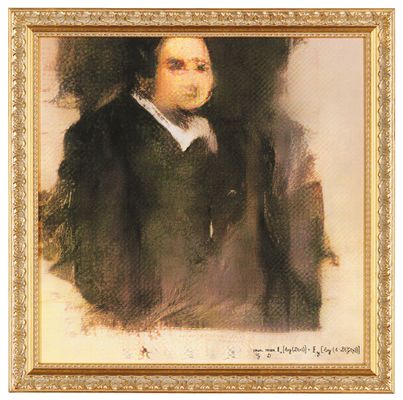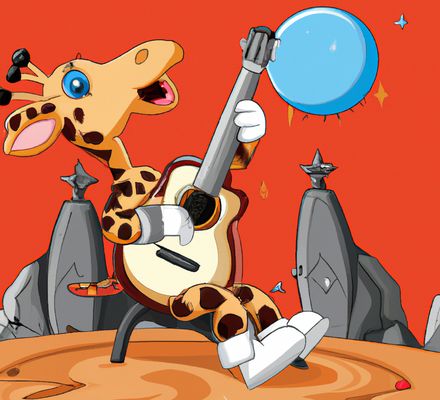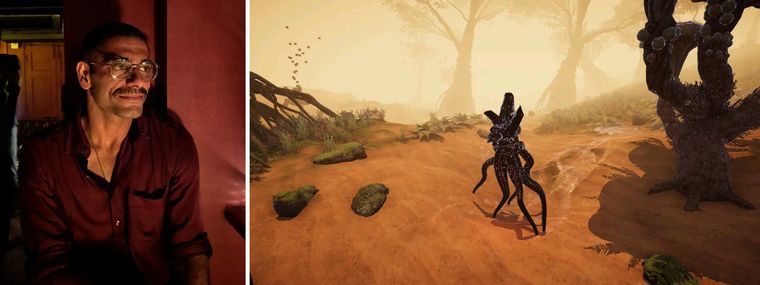Spencer Alden sued Nirvana in 2021. Alden was a baby when the band used a photo of him drifting in a pool, naked, as the cover of its 1991 album Nevermind. The album blew up, made grunge mainstream and took Kurt Cobain to global superstardom.
Alden had recreated the picture for landmark anniversaries of the album, but later felt that Nirvana had indulged in “child abuse”. His case was thrown out.
Not that Nirvana ever had a fear of authority, but this minor legal hassle could have been avoided had DALL-E, Midjourney or Stable Diffusion been around. Cobain could have used these AI tools to create the album cover for Nevermind. He would have just needed the words “baby”, “drifting” and “pool”. But, given his distaste for anything inauthentic, he would probably have hated the technology.
Not everyone thinks like him, especially not in 2022. These free-to-use tools—which use artificial intelligence to generate art based on a few keywords—are having their moment in the sun. The question is: Will they burn conventional artists?
There have been artists who have used artificial intelligence to shape their vision, to add and subtract from it, to modify and polish it. But now, especially in 2022, there has been an explosion of AI generators that have made artists out of anyone with enough bandwidth and vocabulary. Midjourney, for instance, has more than two million active users.
These AI art generators are trained on millions of images on the web, and pull from this dataset to give the user what he needs. They essentially turn text into images. For instance, you want to see what a giraffe playing guitar on Mars would look like. Just key in “giraffe”, “guitar” and “Mars” in any of the AI art generators your Google search throws up. Add the style of art you want, say “painting”, “caricature”, “photorealistic”, and wait a few seconds. You will have what you need—the prompt as a picture, and a newfound, quirky way to pass the time.
There are dozens of such tools available online, some for free. The craze seems to have begun with DALL-E, a deep-learning tool that OpenAI, a company backed by Elon Musk, created. OpenAI now has a billion-dollar investment by Microsoft. It was launched in 2021. This year saw the release of DALL-E 2, which is far superior, and also Midjourney and Stable Diffusion, which are finding fans all over the world.
Many of whom are looking beyond the initial weirdness and shock value to actually use these tools to supplement their creative vision and make art.
Earlier this year, video gamer Jason Allen won a ribbon at the Colorado State Fair with his work ‘Théâtre D’opéra Spatial’. It was a beautiful piece. Only, Allen had an aide—Midjourney. Though he broke no rules and was open about his AI deed, the win cleaved the online art community. If rank amateurs could use AI to seize their space, what would “real” artists do?
Four years earlier, auction house Christie’s sold Portrait of Edmond Belamy, an artwork created using AI, for $4,32,500. Hugo Caselles-Dupré, one of the co-creators, had told Christie’s: “If the artist is the one that creates the image, then that would be the machine. If the artist is the one that holds the vision and wants to share the message, that would be us.”
Jayan K. Narayanan sort of agrees. “I have a friend who is the CEO of a Mumbai-based ad agency. He is not a skilled artist, but he has a fertile imagination,” says the creative director of GetIt, an advertising agency that has done campaigns for Google, Microsoft, IBM and Adobe. “He is extremely good at converting his vision into words and giving them as prompts [to the AI]. Some of the works he has created with AI left us dumbfounded.”
“Craft”, says Narayanan, is not confined to “drawing well”. When he was in fine arts college, the focus was on how to draw. On studying the masters and making your hand flexible. He had college mates who were brilliant at the craft of drawing, but have now fallen by the wayside. “That is, from a completely materialistic point of view,” he stresses.
Narayanan plans to use AI art generators for one of his campaigns for Google AI. “I am in my 40s,” he says. “When I was studying, there was this thing called DTP (Desktop Publishing). A lot of people were doing it. Then there were these artists who would paint actresses on jewellery shop shutters in Kerala. Then flex banners came in. And now there is 3D printing. In this evolution of technology, those who did not upgrade themselves had to find other jobs. I would say there is no way out other than upskilling yourself.” He still does not fully believe that AI will flip the art world on its head, but every day he is becoming more of a believer.
When we think of art, we often think of a person creating a painting or drawing. We think of the artist as an individual who has a unique vision and whose work is inspired by their life experiences and surroundings. But what about AI-generated art? Would it be fair to say that such works would still possess value as pieces of art since they are made by human-made Ais?
As AI becomes more sophisticated and creative, we are going to rely on artists more than ever to help us navigate what life becomes when technology makes art.
Artist Sahej Rahal is not too alarmed. “This novelty is going to die out. The idea is to not treat these technologies with a sense of fear. They are tools at the end of the day, so if anything, they kind of allow us to build things on a scale that was not possible to begin with,” says Rahal, who has incorporated AI in his art at a much deeper level than entering keywords. The 34-year-old has created and used AI programmes in his absurdist and otherworldly works, and has been part of solo and collective exhibitions in several countries. “The images that come out of it (AI art generators), they are passable, but you still need to have a human hand to really make them. If you just go on Instagram, most of the images that I’ve seen so far are exactly the same, which is honestly tragic. But there is stuff that you can do with it to kind of create new stuff. Something that I am actually working on is this comic book that kind of takes images generated from AI and then also some of my own kind of drawings and collages. Then it just becomes one more tool.”
The worry is that managers will see these tools as a money-saving option. They only need pay the subscription fee and not an artist. They also save time. “I think that some people will try to cut artists out,” Midjourney founder-CEO David Holz told Forbes in September. “They will try to make something similar at a lower cost, and I think they will fail in the market. I think the market will go towards higher quality, more creativity, and vastly more sophisticated, diverse and deep content.”
Narayanan believes that “high art” might not be affected, but commercial art, especially those who do creatively menial work that is mass-produced, will definitely be affected. “Let us say you have to make a birthday poster for your personal use. This can easily be done by AI. The subscription fee is only $10. Also, there are now forums that give you the structure of a good prompt. You can copy those and modify as per your need. Going forward, living only off your ‘craft’ will be difficult. ‘Craft’ is reproduceable.”
The technology is in its nascent stage globally, even more so in India. Harish Shirodkar, a graphic designer who has a printing business called Digital Fusion in Goa, says this generative art has not yet created a flutter in his circles. “I have heard of it,” he says, “but these are mostly limited to Instagram pages and have not reached actual workplaces.” He also insists that AI cannot replace the creativity part. “Adobe Photoshop and Premiere were quite basic compared with what they are today,” he says. “There has been a huge leap in terms of technology there, which has helped artists. The same might happen with AI in art. But, unless you are creative and have a concept, there is no point in using AI tools. For instance, if you need to make a logo for a pharma company, and you key in basic words such as tablet and pills, you will get only basic results. The client will not be happy. So, AI can aid people who are already creative, but it will not replace creativity.”
An issue that Narayanan foresees is that these tools can get addictive. “When you have creative block, you tend to rely too much on these tools,” he says. “That can, in the long run, diminish your creativity. I tell my team to always start off with a pencil and paper, use your own brain. If you have a foundation of an idea and then use AI to enhance it, then it is not a problem.”
Artistic pursuits aside, there are legal implications, too. Greg Rutkowski is a digital artist whose name is more popular on Stable Diffusion and Midjourney than Pablo Picasso’s and Leonardo Da Vinci’s. His works are fantastical and de rigueur in a world currently obsessed with myths, dragons and warriors. He was seeing so much likeness in the “inspired” art that he suggested living artists be excluded from the AI databases. “[AI-generated art] raises issues related to ownership (who is the author entitled for copyright), liability (if there is infringement of copyright in other works or noncompliance with other laws) and enforcement challenges (who is entitled to enforce rights),” says Dr Narendran Thiruthy, an assistant professor at the Rajiv Gandhi School of Intellectual Property Law, IIT Kharagpur. “There are a lot of ethical and legal issues related to AI. But also, the progress of technology cannot be stopped. AI-generated works will have influences of works used for training. So, in cases of adaptation or reproduction, there will be issues related to fixation of liability.”
One can argue that a human artist might be inspired by other artists while creating, but he is, usually, not setting out to copy them. The AI, however, is searching for images that fit the description you provide and taking elements from it.
What images these tools are trained on is not public knowledge, but as with other machines that “learn”, most stereotypes humans believe are mirrored in these tools—racism, sexism and every other -ism.
“There isn’t really a way to get a hundred million images and know where they are coming from,” said Holz. “It would be cool if images had metadata embedded in them about the copyright owner or something. But there is not a registry. There’s no way to find a picture on the internet, and then automatically trace it to an owner and then have any way of doing anything to authenticate it.”
There are also other sinister problems like the use of these tools to create pornography and deepfakes. “Say you were to generate an image that could be used as evidence [in a case],” says Rahal. “Or to frame someone? If these images can be used like the way deepfakes are being used, there you actually have an ethical, moral problem. This opens up a really interesting conversation in terms of how do we now understand the idea of truth in a document. Photography from the beginning was this representation of the real.”
The current fears about an impending AI invasion had played out earlier, too, especially when the camera came. And then later when Photoshop arrived. None of those killed art or the artist. “Listen, you know when I started drawing, I did not think I could make a career out of it, honestly,” says Rahal. “I am not going to stop drawing just because a machine can make a drawing as well. I am sure a lot of artists would not. We do it for ourselves also, right?”
The idea of AI competing with artists is irrelevant to Rahal. “You know this is art and not the Olympics,” he says. “I actually think art is, like, this fundamental thing that makes us human, and these are just tools. I kind of stay away from that language of, like, ‘Oh, can this compete with that?’ That’s actually the language of tech, of Silicon Valley.”
But art genuinely is business to a lot of people, and perhaps the most affected in this AI-art deluge would be stock image companies. “In the advertising field, when you are creating a campaign, you start off with a pencil and paper and start sketching on the brief you have got,” says Narayanan. “At this stage, the designer looks up many references, on places like Pinterest or Google search. These AI generators can give you inspiration, too. And every result you get will have four variations (Midjourney), and you can get four more variations of one of the original ones. Sometimes it throws up some ideas you would never have thought of. And that too in a few seconds.”
Sensing danger, Getty Images has already banned the upload and sale of illustrations generated using AI.
The one thing that purists can take solace in, for now, is that AI has trouble drawing hands. “Even when you are sketching, the hand is the trickiest part of the body to draw, anatomically speaking,” says Narayanan. “Also, it is not only the hands. There are pieces of AI art that look stunning at first glance. But, when you zoom in and start inspecting, there are mistakes galore.”
However, at the pace that the tech is growing, nothing seems out of bounds. “When I first started dabbling in AI art, I used to think of doing paintings,” says Narayanan. “But, after the initial curiosity, I got bored in a couple of weeks. The output was not satisfactory.” This was about eight months ago. But recently, when he dipped his toes in again, he found the waters more turbulent, and the current pulled him in. “Just think how far this technology will reach in five years. We are baffled by a technology that is in its nascent stage.”
Whether takeover or cooperation, the human-AI relationship is evolving at a rapid rate. Perhaps too quickly to keep pace with. After all, AI wrote two paragraphs in this story you just read.






